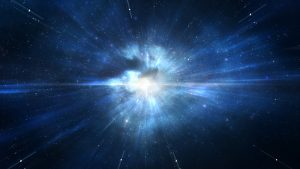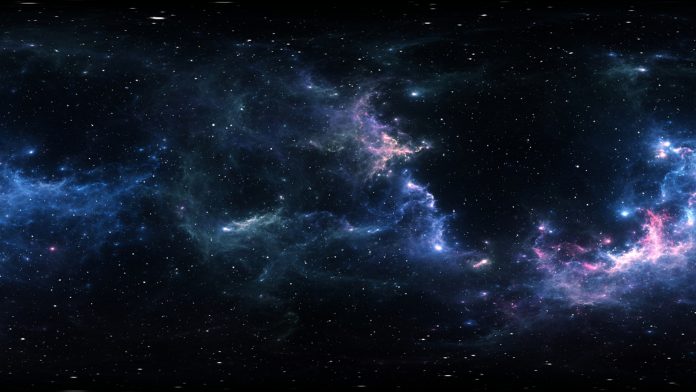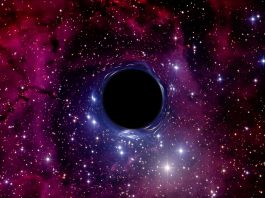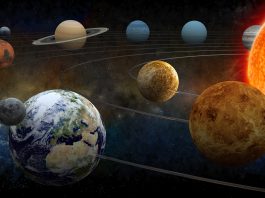Researchers led by the University of Cambridge have been able to make some observations about the first galaxies to exist by using data from India’s SARAS3 radio telescope.
In one of the first astrophysical studies of the period in the early Universe, known as the cosmic dawn, researchers have been able to look at the very early Universe and place limits on the mass and energy output of the first stars and galaxies. Counterintuitively, this was done by not finding the signal they had been looking for, known as the 21-centimetre hydrogen line.
Through this non-detection, researchers were able to place restraints on the first galaxies, enabling them to rule out scenarios about the cosmic dawn, including galaxies that were inefficient heaters of cosmic gas and efficient producers of radio emissions.
Although we cannot yet directly observe these early galaxies, the results, published in the study ‘Astrophysical constraints from the SARAS 3 non-detection of the cosmic dawn sky-averaged 21-cm signal,’ represent an important step in understanding how our Universe transitioned from mostly empty to one full of stars.
Detecting the 21-centimetre line
Many new observatories aim to understand the early Universe, when the first stars and galaxies formed. The recent results are a proof-of-concept study and will pave the way to understanding this period in the Universe’s development.
Images of the early Universe are likely to be made by the end of the decade, through the SKA project’s two next-generation telescopes. For current telescopes, however, the challenge is to detect the cosmological signal of the first stars re-radiated by thick hydrogen clouds.
This signal is the 21-centimetre line, a radio signal produced by hydrogen atoms in the early Universe. Studies of the 21-centimetre line, made with radio telescopes such as the Cambridge-led REACH (Radio Experiment for the Analysis of Cosmic Hydrogen), can shed light on entire populations of even earlier galaxies. The first results from REACH are expected in early 2023.
Astronomers detect the 21-centimetre line by looking for a radio signal produced by hydrogen atoms in the early Universe. This is affected by light from the first stars and the radiation behind the hydrogen fog.
Earlier this year, researchers developed a method that will allow them to see through the fog of the early Universe and detect light from the first stars. Some of these techniques have already been practised in the current study.
Observing properties of early galaxies
In 2018, another research group operating the EDGES experiment published a result that hinted at a possible detection of this earliest light. The recent SARAS3 data disputed this detection. The EDGES result, which reported an unusually strong signal, is now awaiting confirmation from independent observations.
To potentially explain the EDGES result, the Cambridge-led team re-analysed the SARAS3 data and tested a variety of astrophysical scenarios. However, a corresponding signal was not found; instead, the team was able to place some limits on the properties of the first stars and galaxies.

The results from this analysis allowed radio observations of the averaged 21-centimetre line to reveal for the first time the limits of the first galaxies’ main physical properties.
Non-detection of the signal
The researchers used statistical modelling techniques to look for signals from cosmic dawn, when the first galaxies formed, but could not find one.
“We were looking for a signal with a certain amplitude,” said Harry Bevins, a PhD student from Cambridge’s Cavendish Laboratory and the paper’s lead author. “But by not finding that signal, we can put a limit on its depth. That, in turn, begins to inform us about how bright the first galaxies were.”
“Our analysis showed that the hydrogen signal can inform us about the population of first stars and galaxies,” said co-lead author Dr Anastasia Fialkov from Cambridge’s Institute of Astronomy. “Our analysis places limits on some of the key properties of the first sources of light, including the masses of the earliest galaxies and the efficiency with which these galaxies can form stars. We also address the question of how efficiently these sources emit X-ray, radio, and ultraviolet radiation.”
“This is an early step for us in what we hope will be a decade of discoveries about how the Universe transitioned from darkness and emptiness to the complex realm of stars, galaxies and other celestial objects we can see from Earth today,” said Dr Eloy de Lera Acedo from Cambridge’s Cavendish Laboratory, who co-led the research.
The first-of-its-kind study excludes scenarios in which the earliest galaxies were both more than a thousand times as bright as present galaxies in their radio-band emission and were poor heaters of hydrogen gas.
“Our data also reveals something which has been hinted at before, which is that the first stars and galaxies could have had a measurable contribution to the background radiation that appeared as a result of the Big Bang and which has been travelling towards us ever since,” said de Lera Acedo. “We are also establishing a limit to that contribution.”
“It’s amazing to be able to look so far back in time – to just 200 million years after the Big Bang- and be able to learn about the early Universe,” said Bevins.
The research was partially supported by the Science and Technology Facilities Council (STFC), part of UK Research & Innovation (UKRI), and the Royal Society.









